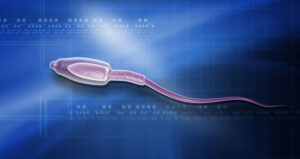Azoospermia And Aspermia: What’s The Major Difference B/w Them
We have seen a lot of people who got confused between Azoospermia and Aspermia. They don’t know what the main difference between them is. That’s why we have decided to address it once at all.
So, if you also don’t know the main difference between Azoospermia and Aspermia, don’t worry because we will take an in-depth look at it in this article.
Table of Contents
Let us take an in-depth look at Azoospermia and Aspermia
What is Aspermia?
Male infertility is caused by aspermia, which prevents the testicles from releasing sperm. Even though aspermia does not result in reduced sperm counts, it does lead males to produce less ejaculated fluid.
Depending on the underlying cause and the complete diagnosis, the treatment for this condition may be different. Despite the absence of ejaculation, orgasms may still occur for males with this condition.
Retrograde ejaculation, blockage of the ejaculatory canal, and anejaculation may all play a role in the condition. Surgical aspermia, nerve damage caused by sickness, and congenital cysts are all curable illnesses that may result in aspermia.
Symptoms of Aspermia
The most alarming indication is the complete absence of sperm after ejaculation. Another collection of symptoms that point to a man having the disease includes:
- Nobody knows whether blood is present in the sperm or if it even exists.
- Anejaculation
- Symptoms of PCOS include scrotum discomfort, genital pain, and urinary pain.
- Sexual encounter-induced cloudiness in the urine
Prevention of Aspermia
If an infection is found in the urinary system, antibiotics should be administered as soon as possible to prevent ejaculatory obstruction.
This may help avoid aspermia from developing if there is an obstacle in the path. However, there is no method to prevent the occurrence of the other causes.

Treatment of Aspermia
A wide range of treatment options are available, each tailored to treat the illness uniquely. Treatment treatments include surgical procedures, anti-infection drugs, and artificial conception.
One kind of assisted reproductive technology that may help a fertile woman conceive naturally if unable to do so is typically intracytoplasmic sperm injections.
What is Azoospermia?
One of the most prevalent causes of male factor infertility is azoospermia, affecting 10% to 15% of males with the illness. Symptoms and treatment options for each form of this illness are unique from those of the others.
You may have azoospermia without having a blockage in your testicles or urethra that prevents your sperm from reaching the sperm-bearing semen after ejaculation. Men with azoospermia may notice a reduction in semen production when they ejaculate if they have an obstruction.

The second kind of azoospermia, nonobstructive azoospermia, is known as this. Having sperm in your sperm indicates that sperm production has dropped to the point where sperm can no longer be found.
If you don’t have any sperm coming out of your testicles, you may have a problem with your reproductive system. Solutions exist, even if this is the situation. The majority of nonobstructive azoospermia’s causes may be remedied or managed using medications.
What Causes Azoospermia?
One of the most common causes of infertility is the combination of genetic and environmental influences that may be related to azoospermia. Further in-depth testing or surgical intervention may be required to correctly identify and treat some of these issues.
A few instances of what could lead to obstructive azoospermia are as follows:
- Although they have different meanings, a vasectomy and a prostatectomy are two phrases that refer to the same surgical operation.
- The lungs are affected by Cystic Fibrosis.
- Infertility may come from a blocked or damaged connection in the reproductive system, including the epididymis and the vas deferens.
- Among other things, the reproductive system may be infected, including the prostate and testicles. Chlamydia and other sexually transmitted diseases might be included in these infections.
- The testicles have been injured or harmed.
